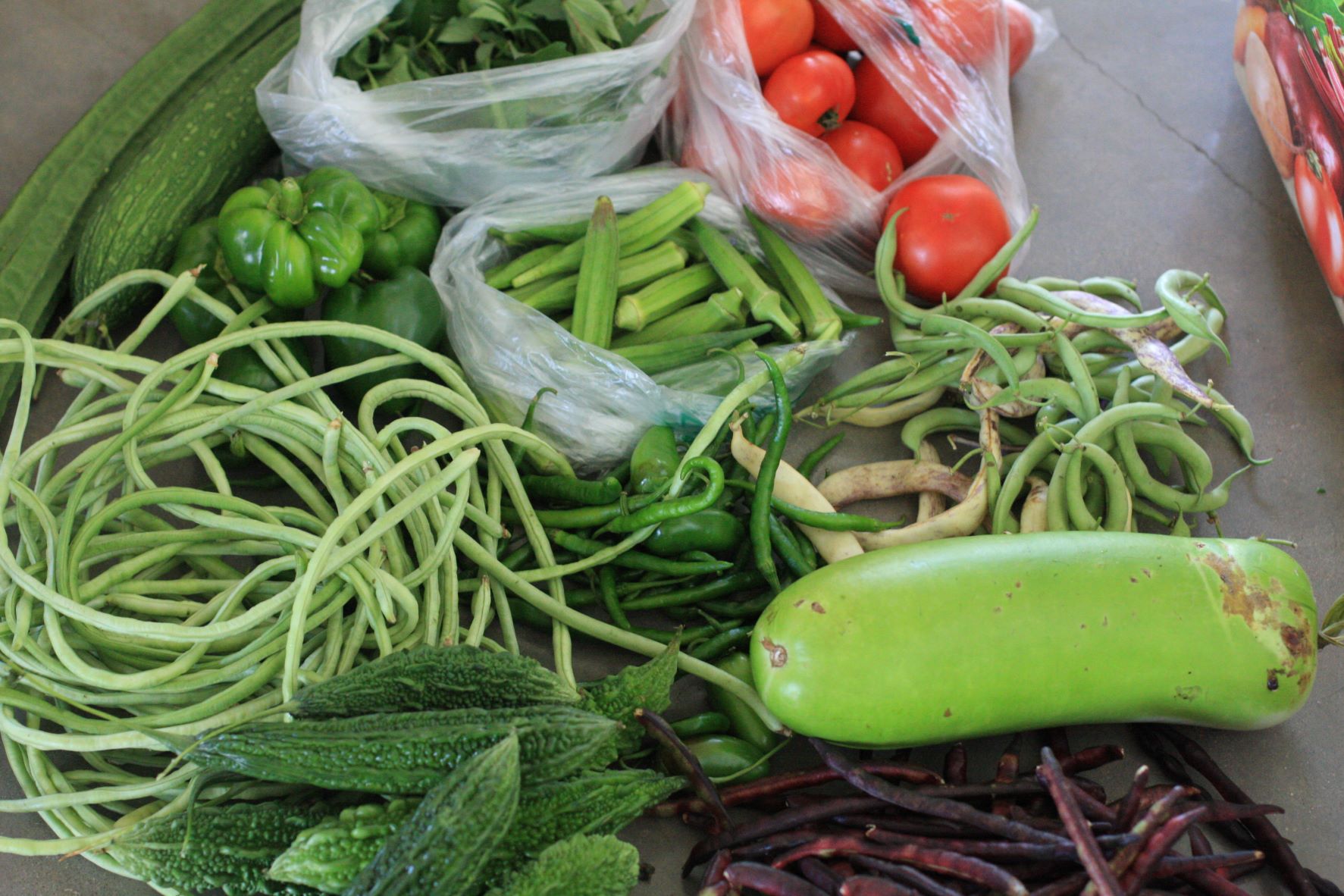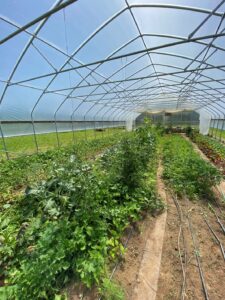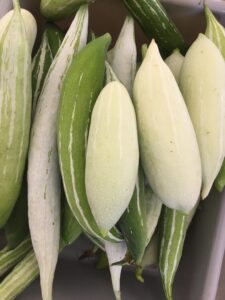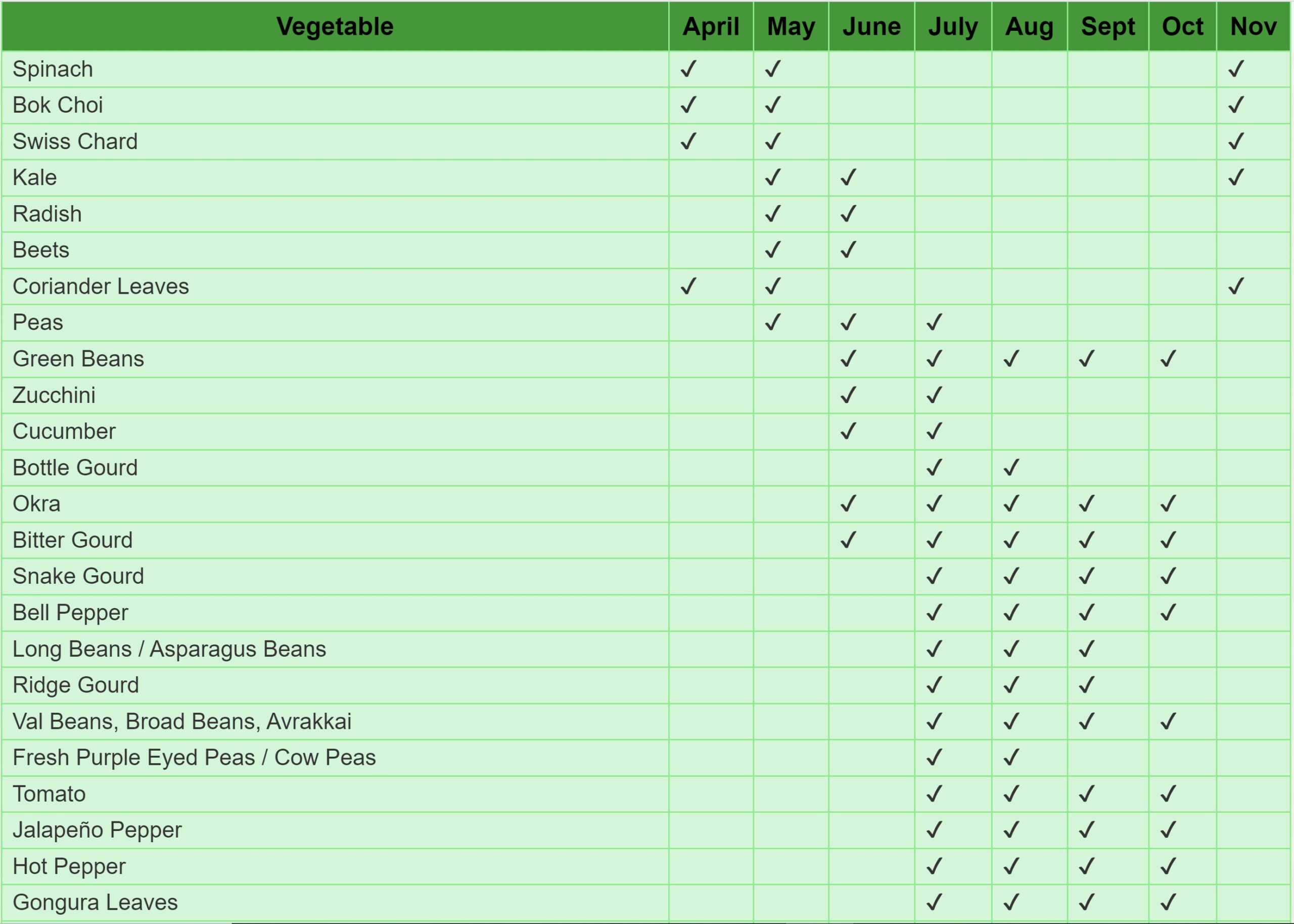Growing Ethnic Crops Locally Offers a Taste of Home

Did you know that the United States is the only place that grows crops from all over the world? That means we have the ability to grow culturally diverse produce to cater to the various communities that live here. Back in January of this year, farmers from throughout Montgomery County participated in the Mini MoCo Farmers’ Conference, held at One Acre Farm in Dickerson. Among the presenters was Indhu Balasubramaniam, founder and farmer of Amaranth Acres. She gave a very informative overview detailing the necessity of growing and distributing ethnic crops.

Amaranth Acres grows ethnic crops providing culturally diverse produce as a taste of home for many living in our county.
Ethnic crops are specialty crops that are part of different cultural cuisines, and many offer medicinal and curative properties. For example, squash leaves and sweet potato leaves may typically be thrown away in the United States, but those items are in demand in many African and Asian communities. Indhu started out by growing for fun and giving the vegetables away as gifts, and then people wanted to buy more.
She gave some examples of popular ethnic crops. In India, she said, the cuisine includes many different types of gourds, such as bitter gourd, bottle gourd, and ridge gourd. Fenugreek leaves are also a good spring green popular in India. Loofah tastes like zucchini when fresh and young. Amaranth and callaloo are different names for the same green that is eaten all over India, Africa, and the Caribbean.

Snake gourds, just one of many ethnic crops grown by Amaranth Acres.
Many greens like the heat, but then attract many bugs. Indhu is working on educating Community Supported Agriculture (CSA) customers to accept leaves with bug holes, even if they don’t look pretty. There are also many items we already grow in abundance here in the United States that are ethnic crops, such as tomatoes, peppers, onions, and sweet potatoes.
Through Community Food Rescue (CFR), a program of Manna Food Center, we try to match culturally appropriate foods with food assistance providers that serve those who will appreciate that specific cuisine. These organizations include the Islamic Center of MD, ISKCON of Washington DC, and Guru Nanak Foundation of America, which serve Asian, Hispanic, and West African communities. There is a large variety of produce grown in Montgomery County, and making sure that members of our community are receiving food that is culturally relevant and desirable to them is a high priority.

A list of crops that Amaranth Acres grows and when harvested.
As Indhu shared her knowledge with other farmers attending the conference, it gave people a chance to brainstorm ways that farmers can collaborate to increase production of ethnic crops. They discussed how there is a need to grow more Hispanic vegetables in the county. They also discussed sharing equipment that is particularly expensive to enable them to grow more crops. Indhu emphasized that none of the crops mentioned require anything special in the soil. As more farmers grow a variety of ethnic crops in Montgomery County, more community members will have access to culturally appropriate produce items. Indhu said it best: “People want a taste of their homeland.”

